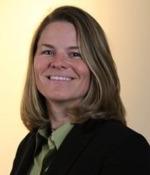In this interview, Mary Thorn, the director of agile practices at Ipreo, explains why there shouldn’t be any real differences between large and small agile teams. She details the qualities of an interchangeable tester and breaks down manual versus automated testing.
Josiah Renaudin: Welcome back to another TechWell interview. Today I’m joined by Mary Thorn, the director of agile practices at Ipreo and a software expert who will be speaking in different tutorials and sessions during this year’s STARWEST. Thank you very much for joining us, Mary. First, could you tell us a bit about your experience in the industry?
Mary Thorn: I have been in software testing for more than twenty years in many different domains and platforms. I have been specializing in agile testing for the past ten.
Josiah Renaudin: Let’s start here: What have you found to be the main difference between leading small agile teams versus leading larger agile teams, just in terms of individual tester responsibility? Does an agile tester on a small team have more on their plate than one at a major organization?
Mary Thorn: In my organizations, there are no differences in a small or large test organization. My goal is to make the processes the same across all testers so that they can become "fungible" across teams if I need to switch people around. Over the past three companies, I have used the same testing techniques for the testers regardless of the team size.
Josiah Renaudin: From your experience, does the tester have the most to learn once a team transitions to agile? Is it the tester’s responsibility to learn how to code or automate in order to keep up with the rest of the team?
Mary Thorn: I think it is a tie between the product owner and the tester on the team as who has to learn the most. Product owners have to figure out how to break large requirements into small chunks and testers have to learn how to do full regression in a sprint.
In my opinion, the whole team owns quality, the automation is just a task on the sprint, and we need to have a few people on the team who can perform that task. With that said, I do encourage and train those testers that want to learn on how to code. I believe in the T-shaped Scrum team—the more multi-skilled people on the team, the less "scrummerfall" there is.
Josiah Renaudin: What qualities does an interchangeable agile tester often have?
Mary Thorn: Good communication skills, great attitude, passionate about testing and committed, creativity, empathy, and high aptitude.
Josiah Renaudin: When it comes to test automation, how much of your strategy has to change as your organization gets bigger and bigger? Are you incorporating new tools, or it is more about spreading out the testing responsibilities in different ways?
Mary Thorn: It does not change; the framework that we build just needs to be able to consume any new open-source software that teams what to use to help with testing.
Josiah Renaudin: In your mind, is there an ideal split between manual and automated testing on a successful agile team?
Mary Thorn: I have done it every single way in the book: One manual/one automator, one manual/two automators, two testers who could do both, two developers who did the testing, and one manual tester/one developer doing the automation. While I like ideals when I start brand new teams and I have the talent, I prefer to start with the two testers who can do both. However, that is few and far between. Since the whole team owns quality, I look at the talent on the test team and work with the developers and discuss with the team on which way to fill often which is the automation gap. At the end of the day, it's just a task on a sprint that the team has to complete. They own that.
Josiah Renaudin: More than anything, what central lesson do you want your audience to learn when it comes to scaling agile testing?
Mary Thorn: Consistent practices improve quality considerably, even if it is really hard to do that across multiple products in different lifecycles.
 Chief storyteller of The Three Pillars of Agile Testing and Quality, Mary Thorn is director of agile practices at Ipreo in Raleigh, NC. Mary has a broad agile and testing background that spans automation, data warehouses, and web-based systems in a wide variety of technologies and testing techniques. During her more than nineteen years of experience with healthcare, HR, financial, and SaaS-based products, Mary has held manager- and contributor-level positions in software development organizations. A strong leader in agile and testing methodologies, Mary has direct experience leading teams through agile adoption and beyond.
Chief storyteller of The Three Pillars of Agile Testing and Quality, Mary Thorn is director of agile practices at Ipreo in Raleigh, NC. Mary has a broad agile and testing background that spans automation, data warehouses, and web-based systems in a wide variety of technologies and testing techniques. During her more than nineteen years of experience with healthcare, HR, financial, and SaaS-based products, Mary has held manager- and contributor-level positions in software development organizations. A strong leader in agile and testing methodologies, Mary has direct experience leading teams through agile adoption and beyond.



